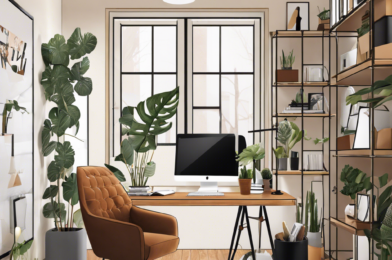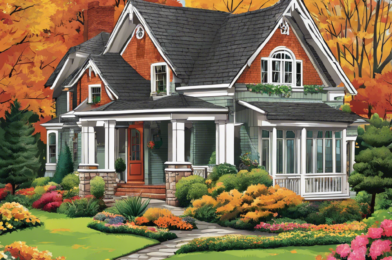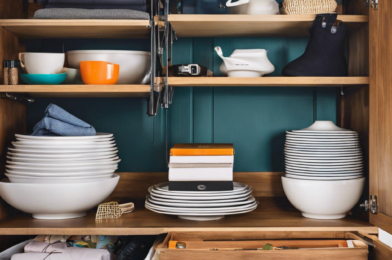# Transform Your Bathroom: A Step-by-Step Guide to Successful Renovations
## Introduction: Why Renovate?
Renovating your bathroom can be a rewarding endeavor, adding value and comfort to your home. It may be time for an upgrade if your space feels outdated, inefficient, or simply lacks the functionality you desire. A well-planned renovation can transform your bathroom into a relaxing retreat, increasing both your enjoyment and the value of your property. In this step-by-step guide, we’ll take you through the entire process, ensuring your renovation project goes smoothly, stays within budget, and delivers the bathroom of your dreams.
## Planning: Define Your Vision and Set a Realistic Budget
Start by defining your vision for the space. Do you want a luxurious spa-like retreat or a sleek, modern bathroom? Consider your must-haves and nice-to-haves, from fixtures and finishes to storage solutions and lighting. Browse magazines, online sources, and home improvement stores for inspiration and to get a sense of the latest trends and options available. Setting a realistic budget is crucial. Factor in the cost of materials, labor, and any unexpected expenses that may arise. It’s wise to add a buffer to your budget for unforeseen issues, such as plumbing problems or structural repairs.
## Selecting Materials: Choices Galore
The fun part of planning is selecting the materials and finishes that will bring your dream bathroom to life. Choices abound for flooring, wall tiles, vanities, and fixtures. Consider durability and maintenance when making your selections. For example, porcelain tiles are a popular choice for bathrooms due to their water-resistant and durable nature. Natural stone, though beautiful, may require more sealing and maintenance. Don’t forget to include smaller details like towel racks, cabinet handles, and lighting fixtures in your plans, ensuring they complement your overall design aesthetic.
## Permits and Hiring Professionals: Essential Steps
Most bathroom renovations will require permits, particularly if structural changes or plumbing alterations are involved. Familiarize yourself with local regulations to ensure your project complies with building codes. Hiring professionals, such as licensed plumbers and electricians, is essential for a safe and successful renovation. Their expertise can help you avoid costly mistakes and ensure your new bathroom functions flawlessly. Get multiple quotes, check references, and ensure they are insured and qualified for the job.
## Demolition and Construction: The Fun Begins
Once planning and preparations are complete, it’s time for the exciting part: demolition. Stripping out the old bathroom may be a DIY project, but proceed with caution, especially when dealing with electrical work or plumbing. The construction phase involves roughing in new plumbing, installing new walls and flooring, and creating the framework for your new bathroom. This stage can be complex, so having skilled tradespeople on hand is vital.
## Plumbing and Electrical: Behind-the-Scenes Work
Plumbing and electrical work are critical components of your renovation. Ensure your tradespeople are qualified and experienced in these areas. Any mistakes in these systems can lead to costly and dangerous problems down the line. Update old pipes, and ensure your new layout considers efficient plumbing design. For electrical work, factor in adequate lighting, ventilation, and power points for appliances and devices.
## Wall and Floor Tiling: Setting the Scene
Tiling can transform a plain space into a stunning showcase. When selecting tiles, consider size, color, and texture to create the desired ambiance. Larger format tiles can make a small space feel more expansive, while textured tiles add interest and a sense of luxury. Don’t forget to choose appropriate grout colors and sealants to protect your tiles and make cleaning easier. Professional tilers can ensure your walls and floors are impeccably finished and durable.
## Installing Fixtures and Finishes: The Final Touches
Now it’s time for the finishing touches that bring your bathroom to life. Install your chosen vanity, sink, shower, and bath. Select a statement-making freestanding tub or a sleek, built-in shower for a modern look. Consider water efficiency when choosing fixtures, and don’t forget the little details, like a rainfall showerhead or a handheld sprayer, to elevate your bathing experience. Mirror and lighting choices are also essential, creating ambiance and functionality. A well-lit bathroom can make daily tasks easier and provide a relaxing atmosphere.
## Storage and Organization: The Key to a Calm Space
Incorporating storage solutions is vital to maintaining a calm and clutter-free bathroom. Consider custom cabinetry to maximize space and create a seamless look. Vanity cabinets, open shelves, and niche recesses can provide practical storage for towels and toiletries. Think about creative solutions, like ladder shelves or hidden compartments, to ensure your space functions efficiently and remains tranquil.
## Final Inspections and Touch-ups: Almost There!
As your renovation nears completion, it’s time for final inspections and touch-ups. Ensure all work complies with local regulations and that your tradespeople provide relevant compliance certificates. Check for any minor flaws or imperfections that need addressing, such as scratches on fixtures or uneven grout lines. A fresh coat of paint can also work wonders to refresh the space. These final touches ensure your bathroom shines and is ready for years of enjoyment.
## Unveiling Your New Bathroom: Enjoy the Transformation!
The moment you’ve been waiting for has arrived – it’s time to unveil your new bathroom! Step inside and admire the transformation, from the gleaming new fixtures to the stylish finishes you carefully selected. Take a moment to appreciate the improved functionality and comfort your renovated space offers. Remember to maintain and care for your new bathroom to keep it looking its best for years to come. Now, relax and indulge in the sanctuary you’ve created.
## Maintenance and Care: Keeping It Pristine
To ensure your renovated bathroom stays in top condition, establish a regular cleaning routine and address any issues promptly. Use mild, non-abrasive cleaners to protect your fixtures and finishes. Keep an eye on grout lines and reseal them periodically to prevent staining. Regularly check for any leaks or water damage, especially around showers and tubs. With proper care, your new bathroom will remain a soothing and stylish retreat for years to come. Enjoy your refreshed space!
Renovating your bathroom is an exciting journey that requires careful planning, skilled tradespeople, and an eye for detail. By following these steps and staying organized, you can transform your outdated or inefficient bathroom into a stunning and functional space. Remember to set realistic expectations, be prepared for unexpected challenges, and always prioritize quality. Your dream bathroom is within reach, and with the right approach, you can create a space that enhances your home and provides a soothing escape from daily life. Happy renovating!









